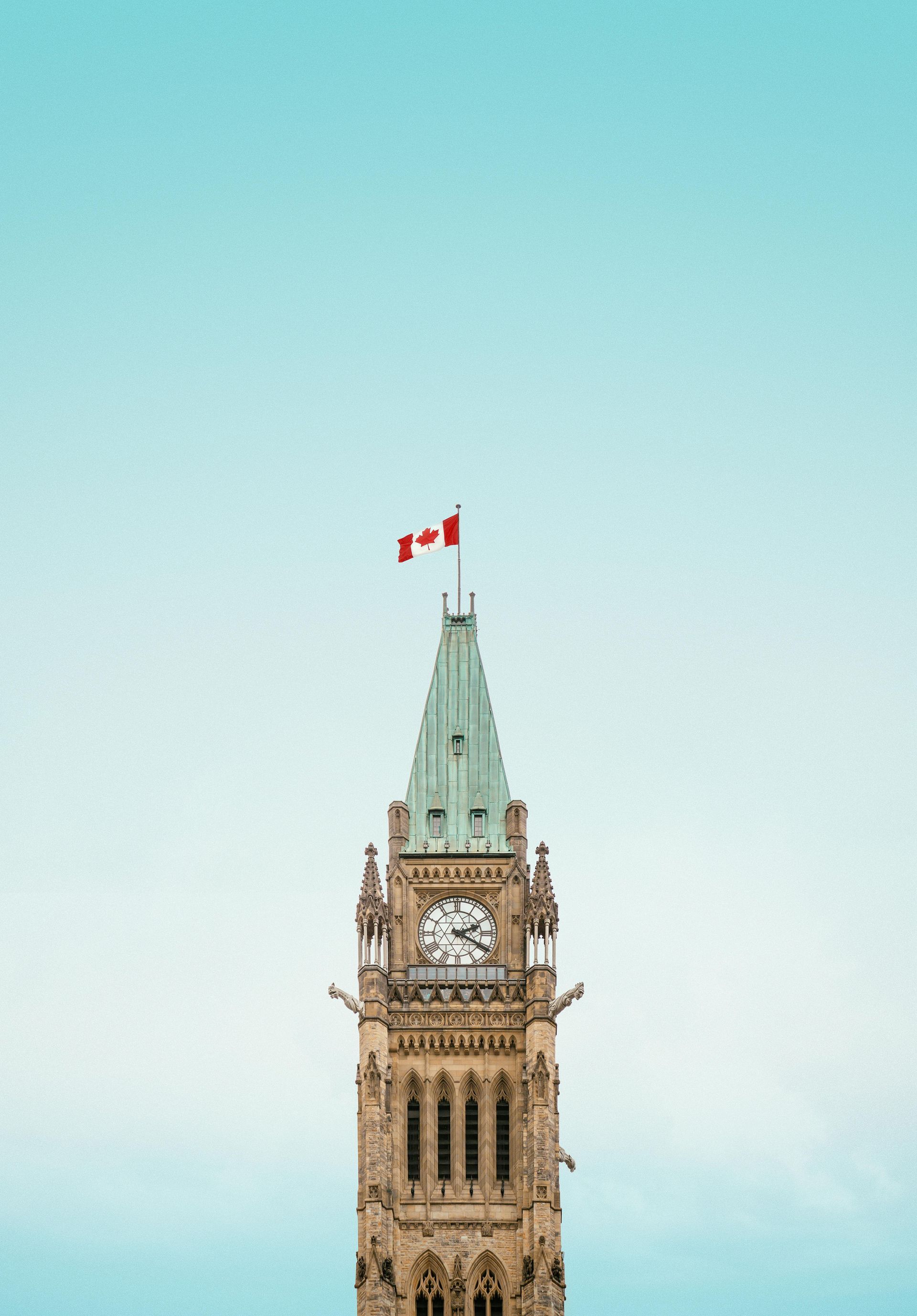Buy
Sell
Own
Invest
REAL ESTATE PROFESSIONALS
WHERE IT ALL BEGAN
Growing up, Dave had an interest in business and investing. Moving to Guelph opened his eyes to the opportunities of applying his interest in Real Estate to purchasing his first investment property in 2003. After some early success, Dave began to grow his real estate portfolio, learning some lessons along the way.
Now, LIVEHERE Real Estate has been creating the best possible client experience for more than two decades.
WHY LIVEHERE REAL ESTATE?
We're Trusted & Recommended
OUR BLOG

Here's a breakdown of Canada’s first time home buyer (FTHB) programs To start, each program defines a first time home buyer in a different way, which can make things confusing to some clients. Here are the three major programs Canadians most often utilize: The Ontario Land Transfer Tax Rebate; The RRSP Home Buyers’ Plan (HBP); The First Home Savings Account (FHSA). Ontario land transfer tax rebate If you’re buying property in Ontario, the land transfer tax (LTT) rebate is available. It can save you up to $4,000 on the provincial land transfer tax, plus up to another $4,475 on the Toronto municipal land transfer tax if you’re buying in Toronto. The LTT rebate has strict guidelines in order to qualify: -You must be at least 18 years old -You must have never owned a home or any interest in a home anywhere in the world -You must live in the home as your principal residence within nine months of the purchase -Your spouse or common-law partner must also never have owned a home while you’ve been together -residency restrictions also apply RRSP Home Buyers’ Plan The HBP allows qualified FTHB to use up to $60K in RRSP savings to help with a down payment. To qualify: -You must not have lived in a home that you (or your spouse/common-law partner) owned in the current year or the four preceding calendar years -You need a signed agreement to buy or build a qualifying home -You must intend to make that home your principal residence within one year -You must be a resident of Canada at the time of the withdrawal and when you buy the home First Home Savings Account To open and use an FHSA: -You must be between 18 and 71 years old and a Canadian resident -You must not have owned or jointly owned, or lived in, a qualifying home in the calendar year before you open the FHSA or during the previous four calendar years. *This rule also considers property owned by your spouse or common-law partner that you lived in Does being a first-time buyer impact your mortgage? For a High Ratio/ Insured mortgage, being a FTHB can provide additional options: -Previous home owner buyers are eligible for a 30-year amortization with mortgage insurance only when purchasing newly built homes. -First-time homebuyers are eligible regardless of whether they are buying a new or resale home. Educating first time home buyers is our job. Supporting your home ownership journey from beginning to end is our purpose. We don't just help you buy it - we help you own it. Reach out to see what we can do for you!

As of mid-2025, the worst of the tariff turbulence looks to be in the rearview mirror, and Canada’s economy appears to be charting a slow, cautious course forward. This keeps future rate cuts on the table, but only if warranted by clear evidence of further weakness. The Canadian job market is gradually regaining its footing after the tariff-induced jolt earlier this year. This tentative stabilization, coupled with cooling inflation, has bought the Bank of Canada time to hold interest rates steady. While global issues from the U.S.-induced trade war persist, the current outlook is for moderate growth and steady rates for the time being. Quick Takes: Canada’s labour market is soft but stabilizing, with July job losses offset by a steady 6.9 percent unemployment rate and limited new damage in trade-exposed sectors, suggesting the tariff shock is largely behind us. Inflation has eased toward 2 percent while growth is mixed, so the Bank of Canada is holding at 2.75 percent, and mortgage rates are likely to remain broadly stable for now. Key watch points are core inflation, employment, and U.S. policy, since a clear domestic slowdown could reopen the door to cuts while a firm U.S. economy and a cautious Fed limit how far Canadian yields can fall. First National Financial LP - Capital Markets Update - Aug 15 2025 Canada’s job market has been on a rollercoaster in 2025 because of trade uncertainty and tariffs. After a brief steady patch in late 2024 and early 2025, unemployment began edging up again, especially in trade-sensitive industries. The latest July employment report reflects this volatility: Canada shed 41,000 jobs in July, erasing roughly half of June’s outsized gain (+83,000), yet the unemployment rate held at 6.9% (just below May’s 7.0%). In other words, July’s job losses were significant but not enough to push unemployment higher, thanks in part to some workers leaving the labour force. Indeed, Statistics Canada noted the uptick in unemployment over the past year has been driven more by longer job searches and new entrants struggling to find work, rather than mass layoffs. Encouragingly, July’s pullback in employment was not concentrated in export-driven sectors as one might expect from tariff impacts. The manufacturing and trade sector employment was largely unchanged on the month (with transportation and warehousing even adding 26,000 jobs). Instead, the declines came from areas like information, culture, and recreation (-29k) and construction (-22k), as well as a notable drop in summer youth employment. Overall, Canada’s labour market remains softer than usual, but recent data hints at stabilization. The July labour market data is showing that tariff-related suggests that tariff-related damages may already be behind us, with leading indicators like business sentiment and job postings starting to stabilize over the summer after a pronounced cooling in the spring. In plain terms, the worst shock to hiring from the tariff turmoil may be behind us. That said, conditions vary widely across sectors and regions. Tariff anxiety has undeniably dampened hiring plans broadly, and actual job losses remain concentrated in industries tied to cross-border trade. Manufacturing employment, for example, is down compared to a year ago, with Ontario accounting for over 60% of the past year’s increase in unemployment as factories shed jobs. Southwestern Ontario cities like Windsor have seen jobless rates spike into the double-digits amid the auto sector slowdown. In contrast, areas less exposed to U.S. trade, including parts of Atlantic Canada and the Prairies, have shown resilience or even declining unemployment. These fault lines underscore that while the national labour market may be stabilizing in aggregate, regional disparities remain significant. Importantly, permanent layoffs nationally have not spiked; rather, it’s taking longer for displaced workers to find new jobs, reflecting a slower churn in hiring. This “softening but not collapsing” theme echoes the view that trade disruptions are a headwind, yet likely to be “contained,” with the unemployment rate peaking at levels slightly above 7.0%”. Tariffs, Growth, and Inflation: Mixed Economic Signals The tariff backdrop that emerged from late 2024 into 2025 weighed on Canada’s economic momentum. Uncertainty around U.S. trade policy prompted businesses to pull back, especially in export-focused sectors. After strong GDP growth in Q1 2025 (when exporters front-loaded shipments to get ahead of anticipated tariffs), the economy likely contracted about 1.5% in Q2 as that temporary export surge reversed. The Bank of Canada noted that U.S. tariffs have disrupted trade flows; a sharp drop in exports and softer U.S. demand for Canadian goods contributed to the second-quarter downturn. Heightened uncertainty also restrained business investment and household spending in recent months. In short, the tariff shock acted like a flash freeze on portions of the economy in the spring. Yet outside of trade-heavy sectors, Canada’s domestic economy has shown pockets of resilience. Consumer-facing industries saw modest growth earlier this year, and housing activity has started to stabilize after a prolonged slowdown. As tariffs took effect, Canadian firms and consumers proved reasonably adaptable: global financial conditions improved modestly (equity markets rose, credit spreads narrowed) and longer-term bond yields ticked up on signs that worst-case economic scenarios were being avoided. For Canada, this means fixed mortgage rates have not fallen much despite the Bank of Canada’s rate cuts earlier in the year; bond markets are pricing in a relatively resilient outlook. The BoC’s July Monetary Policy Report opted not to issue a single GDP forecast but instead mapped out scenarios. In its “current tariff scenario” (reflecting tariffs in place as of July), the Bank projects a return to modest GDP growth (1% annualized) in the second half of 2025 as exports stabilize and consumer spending gradually picks up. Economic slack is expected to persist into 2026, keeping growth below potential for some time, but not spiralling into a severe recession. Inflation dynamics in Canada have improved even amid the trade turmoil. Headline CPI inflation was 1.9% in June, essentially back within the Bank’s 2% target range. Easing price pressures, particularly as earlier interest rate hikes cooled domestic demand and housing costs, has offset some tariff-driven cost increases. The Bank estimates underlying inflation (excluding volatile components and adjusted for tax changes) is about 2.5%, a bit above target but trending down. Tariffs are exerting some upward pressure on prices, especially for affected goods; but weaker economic conditions are counterbalancing this. In fact, under the Bank’s main tariff scenario, these opposing forces roughly cancel out, keeping Canadian inflation near 2% through the forecast horizon. Put simply, softer demand is helping to contain domestic inflation even as import costs rise. This outcome differs from the U.S., where tariffs cover a much broader swath of imports and are starting to nudge consumer prices higher. (Notably, over 75% of U.S. imports face tariffs of at least 10%, compared to less than 10% of Canadian imports, thanks to exemptions under USMCA rules.) Thus, Canada’s inflation outlook is a bit more benign than America’s, giving the Bank of Canada slightly more breathing room on policy. Nonetheless, the tariff cloud is far from cleared. The BoC warns that tariffs are now a “permanent fixture” in the outlook, likely dampening investment and productivity beyond the immediate cycle. Businesses face ongoing costs to reconfigure supply chains and diversify markets, which could still filter through to consumer prices over time. The central bank also modeled alternative scenarios: a de-escalation in trade tensions (average U.S. tariff falling to 10%) would spur a quicker economic rebound for Canada but also pull inflation slightly below target, whereas an escalation (average tariff jumping to 28%) could push Canada into a prolonged recession through early 2026 while lifting inflation above 2.5%. This worst-case “stagflation” scenario underscores why policymakers remain cautious. For now, though, tariffs in place have been “less severe than feared” and largely targeted in scope, leaving the majority of Canadian exports to the U.S. still duty-free under trade agreements. So long as a broader trade war doesn’t materialize, Canada’s economy should manage a slow-growth trajectory with contained inflation. Bank of Canada Outlook: On Hold, But Watching Closely In response to this data, the Bank of Canada has adopted a patient, data-dependent stance. After aggressively tightening policy in 2022-2023 to combat high inflation, the Bank pivoted to easing in late 2024 and through early 2025 delivered a total of 7 rate cuts (a cumulative 2.25 percentage points of reduction) as growth faltered. By March 2025, the overnight rate was brought down to 2.75%, where it has remained since. At its most recent decision (July 30, 2025), the BoC held the policy rate at 2.75% for a third consecutive meeting, opting to assess incoming data before considering any further moves. The tone was notably cautious yet balanced. On one hand, officials acknowledged that Canadian growth has softened since the start of the year, and that excess supply (economic slack) is increasing – classic arguments for easier policy. On the other hand, they pointed out that the economy has proven more resilient than worst-case scenarios envisioned in the spring, and inflation isn’t falling much below target either. A few recent inflation readings surprised slightly to the upside, giving the Bank reason to pause on additional stimulus. The Governing Council also noted that some of the heavy lifting is being done by fiscal policy (e.g., targeted government support for trade-impacted sectors), reducing pressure on monetary policy to respond. From a mortgage market perspective, this likely translates into a period of relative stability in interest rates. The BoC’s earlier cuts are still working their way through the system. With mortgage rates having only stabilized at levels near or above those of 2020–21 originations, the stimulus effect has been modest. For households and borrowers, it feels less like a return to ultra-cheap credit and more like a slight easing off the brake pedal. Fixed mortgage rates, influenced by bond yields, remain elevated by historical standards. Indeed, the recent resilience in the economy has seen longer-term bond yields firm up, rather than fall, in anticipation that no immediate rate relief is needed. Barring a negative surprise, variable mortgage rates linked to the overnight rate should hold steady as well. Lenders and mortgage professionals can thus expect the cost of borrowing to hover around current levels in the coming months. Any shifts will hinge on incoming evidence: a decisive slide in growth or inflation would tilt the Bank toward a cut, whereas signs of re-accelerating inflation (or a robust rebound in jobs) could delay easing further.






